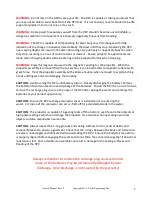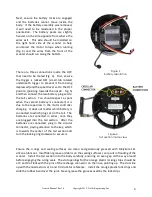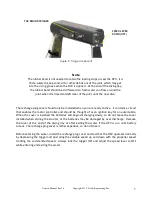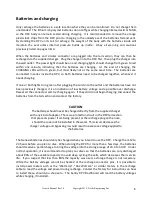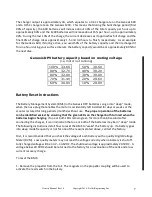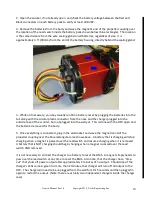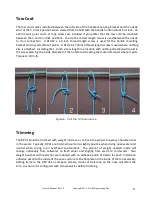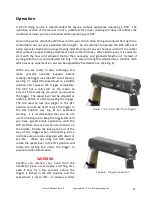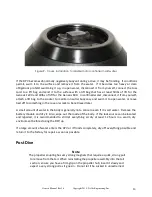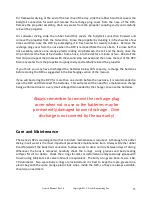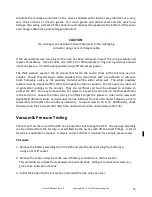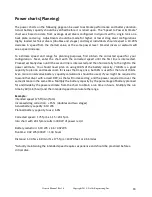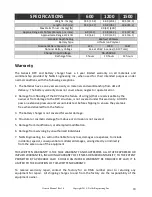
Genesis Manual Rev1.6 Copyright 2018, Nellis Engineering, Inc.
16
Lubricate the recharge connector on the nose as needed with silicone spray lubricant or a very,
very small amount of silicone grease. Too much grease will attract sand and dirt which can
damage the sealing surfaces of the connector and also become packed in the bottom of the cover
and charger cable holes, preventing good contact.
CAUTION
Do not apply any petroleum based lubricants to the recharging
connector plug, cover or charger cable.
If the vacuum/pressure test plug on the nose has been removed, inspect the o-ring carefully and
replace if necessary. Use a Buna-N, size -904, 70 or 90 durometer o-ring and a generous amount
of silicone grease. Install the plug and then wipe off the excess grease.
The thick washers used on the 12 screws that fasten the nozzle struts to the tail cone are zinc
anodes. Should they develop a white powdery film, clean them with a toothbrush or soft wire
brush following a dive, as the powdery material will be softer when wet. The white powdery
residue must be cleaned off for them to properly function as anodes. Do not apply any lubricant
or protectant coatings to the anodes. They are sacrificial and must be allowed to corrode, to
protect the DPV. You may remove these 12 screws to inspect for corrosion on the threaded holes
in the tail cone. Grease the holes (using a toothpick to get the grease in side) and screws with
AquaShield (formerly know as AquaLube) marine lubricant from the DA Stuart Company prior to
reassembly and replace the anodes as necessary. Torque screws to 35 in-lb. Additionally, check
the torque on the 12 screws that attach the nozzle struts to the nozzle (torque 30 in-lb).
Vacuum & Pressure Testing
The test port on the nose of the DPV can be used for leak testing the DPV. A test gauge assembly
can be ordered from the factory or assembled by the owner with off-the-shelf fittings. A list of
materials is available on request. A bicycle pump is all that is required for a simple pressure test.
Procedure
1. Remove the battery assembly from the DPV and also the test port plug from the nose,
using an 11/16" socket.
2. Remove the center screw from the row of battery connectors on the tail section.
This will allow air to flow freely between the tail and body. Failing to remove this screw can
give a false indication of a leak.
3. Install the body onto the tail section and install the lock strips as usual.



